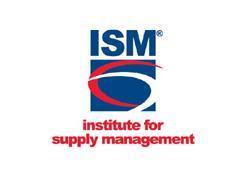Purchasing Managers’ Index Decreased to 46.8% in July 2024
Tempe, AZ, August 1, 2024--Economic activity in the manufacturing sector contracted in July for the fourth consecutive month and the 20th time in the last 21 months, according to the latest Manufacturing ISM (Institute for Supply Management) Report On Business.
The Manufacturing Purchasing Managers’ Index (PMI) registered 46.8% in July, down 1.7 percentage points from the 48.5% recorded in June. A Manufacturing PMI above 42.5%, over a period of time, generally indicates an expansion of the overall economy.
The overall economy continued in expansion for the 51st month after one month of contraction in April 2020. However, the New Orders Index remained in contraction territory, registering 47.4%, 1.9 percentage points lower than the 49.3% recorded in June.
The July reading of the Production Index (45.9%) is 2.6 percentage points lower than June’s figure of 48.5%.
The Prices Index registered 52.9%, up 0.8 percentage point compared to the reading of 52.1% in June.
The Backlog of Orders Index registered 41.7%, equaling its June reading. The Employment Index registered 43.4%, down 5.9 percentage points from June’s figure of 49.3%.
The Supplier Deliveries Index indicated slowing deliveries, registering 52.6%, 2.8 percentage points higher than the 49.8% recorded in June. A reading of above 50% indicates slower deliveries, which is typical as the economy improves and customer demand increases, the report notes.
The Inventories Index registered 44.5%, down 0.9 percentage point compared to June’s reading of 45.4%.
The New Export Orders Index reading of 49% is 0.2 percentage point higher than the 48.8% registered in June.
The Imports Index remained in contraction territory in July, registering 48.6%, 0.1 percentage point higher than the 48.5% reported in June.
“U.S. manufacturing activity entered deeper into contraction," says Timothy R. Fiore, CPSM, C.P.M., chair of the ISM Manufacturing Business Survey Committee. "Demand was weak again, output declined and inputs stayed generally accommodative.
"Demand slowing was reflected by the (1) New Orders Index dropping further into contraction, (2) New Export Orders Index continuing in contraction, (3) Backlog of Orders Index remaining in strong contraction territory, and (4) Customers’ Inventories Index moving lower to the higher end of ‘too low’. Panelists’ companies reduced production levels month over month as head-count reductions continued in July.
"Inputs--defined as supplier deliveries, inventories, prices and imports--generally continued to accommodate future demand growth. Demand remains subdued, as companies show an unwillingness to invest in capital and inventory due to current federal monetary policy and other conditions."
The five manufacturing industries reporting growth in July are Printing & Related Support Activities; Petroleum & Coal Products; Miscellaneous Manufacturing; Furniture & Related Products; and Nonmetallic Mineral Products.
The 11 industries reporting contraction in July are, in order, Primary Metals; Plastics & Rubber Products; Machinery; Electrical Equipment, Appliances & Components; Transportation Equipment; Fabricated Metal Products; Food, Beverage & Tobacco Products; Wood Products; Paper Products; Chemical Products; and Computer & Electronic Products.
